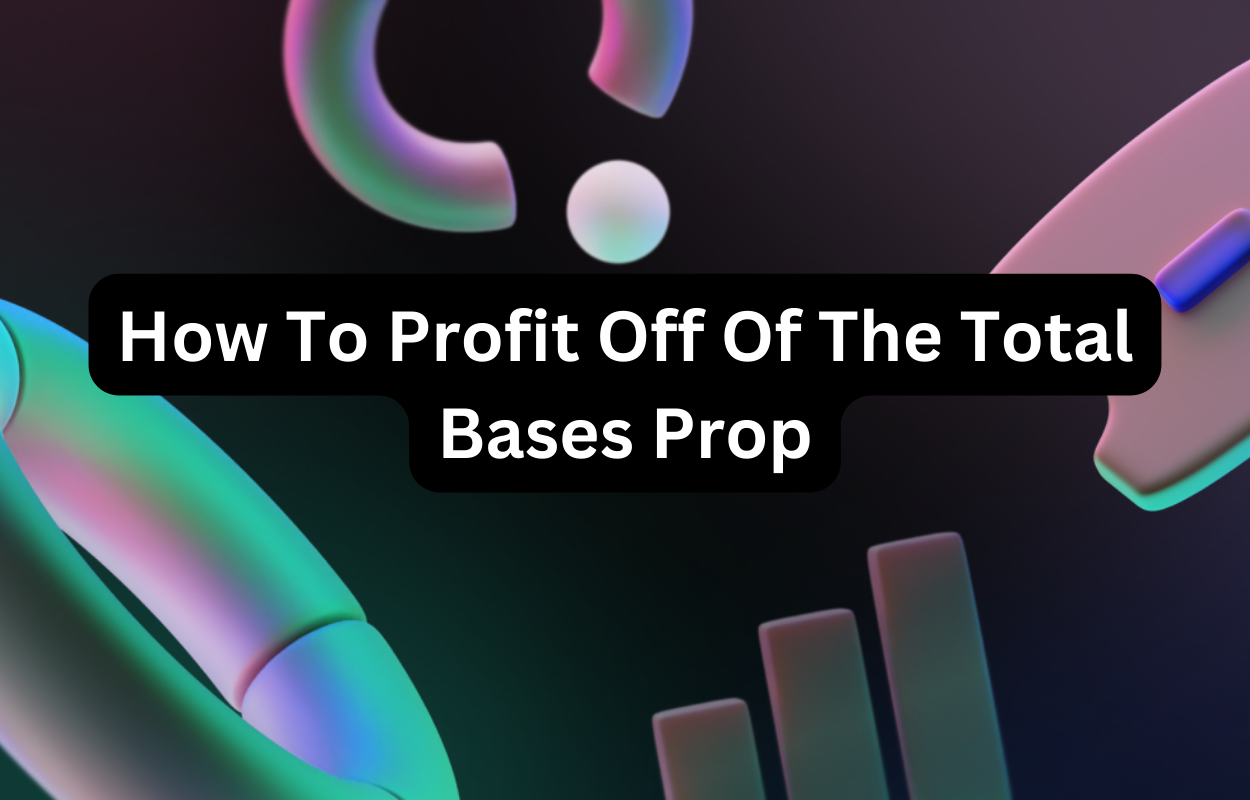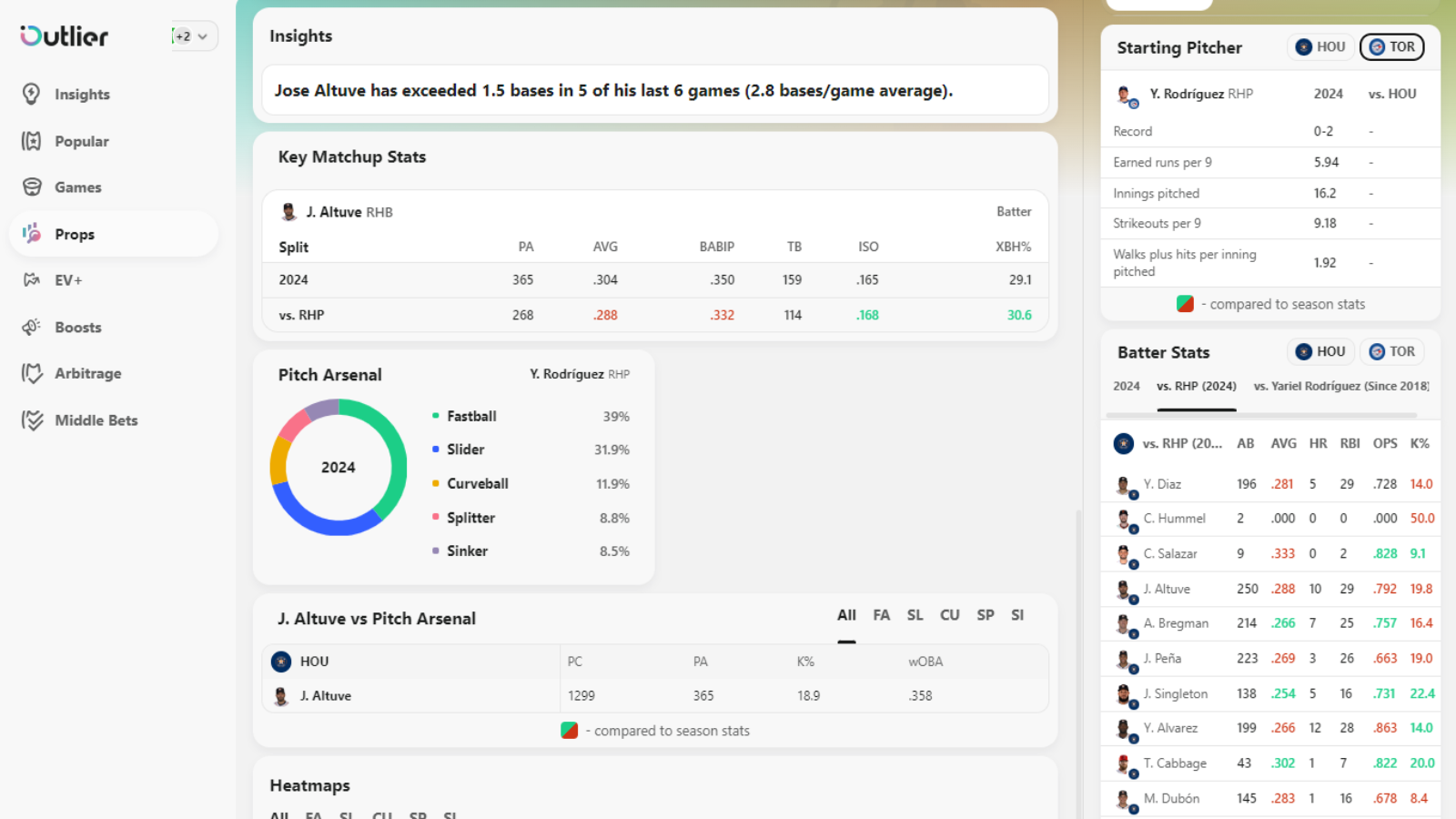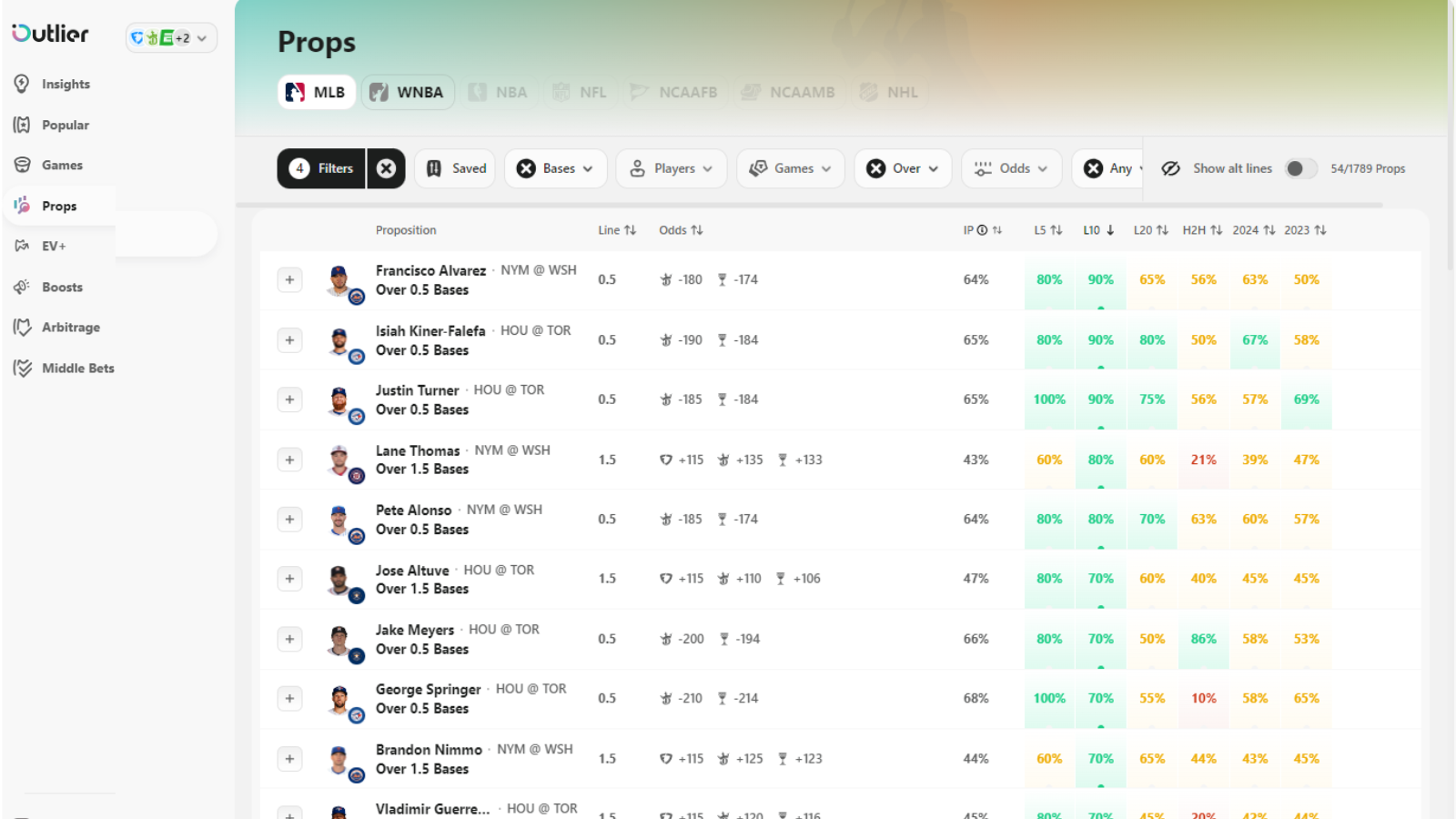How To Profit Off Of The Total Bases Prop
Sabermetrics and advanced stats have not only become a focal point for Major League Baseball managers and front offices, sports bettors and fantasy baseball players are more than well-versed in these numbers. It’s the modern way to bet on the game. While the previous generation only focused on moneylines, run lines and totals, sharp bettors will now scour the player prop market – and total bases specifically – to see if they can find some value.
There is some strategy involved with betting the total bases prop. Whether you’re new to the prop or looking to improve your approach, this article is going to help you find more success with it.

What Is Total Bases?
Total bases is the number of bases gained by a player throughout his hits in a game. For example, if a player records a single, that would be one base. If they strikeout, that’s no base. If they hit a home run, that’s four bases.
There are two things that bettors need to keep in mind with the total bases prop as it’s frequently an area of confusion. Walks and stolen bases do not count towards total bases. Total bases is strictly what comes from batter hits. If a player walks, that’s not a base. Also, if a player is either hit by a pitch or steals a base, or advances on a wild pitch, none of those count towards total bases.
This metric has actually long been used as it is part of the calculation for slugging percentage. To calculate a player’s slugging percentage, you take the total bases (for the entire season) and divide that by at-bats.
How It Differs From Hits
The nuances between hits and total bases is not only important for generally evaluating a player, it’s critical to betting. The fact that you have these two options allows you to pinpoint which is best for you in any given situation.
The main difference between the two is that hits is a more general metric. If a player goes four-for-five on a given day, that’s going to look really good on the batting average (.800). However, it doesn’t given enough detail as to what types of hits the player is producing. Did he produce four singles or four home runs? Those are two very different scenarios. One provides a little more detail.
Hits are a good option to bet when you want to be more general. You have a good feeling that the player is going to make contact but you’re not sure if they’re going to be hitting singles or producing power. On the other hand, total bases might be a better option if you do think that player will find the gaps or club a dinger.
How To Handicap The Total Bases Prop
Now that we’re all on the same page as to what the total bases prop is all about, let’s take a look at the strategy of betting this prop.
1. Examine The Pitching Matchup
The first thing you’re going to want to look at who is on the mound for the other team. Then when you’re starting to looking at different player props, you have to cross-reference that with the batter-pitcher history.
A good example of this is Milwaukee Brewers ace Corbin Burnes and St. Louis Cardinals slugger Paul Goldschmidt. If you see Burnes on the mound, your first instinct might be to bet under on total bases for a number of players. For example, Nolan Arenado bats just .217 against him in 23 at-bats while Tommy Edman is at .207 in 29.
Paul Goldschmidt (4) off RHP Corbin Burnes (4) – 108.6 mph, 22 degrees (445 ft Home Run)
93.7 mph Four-Seamer#STLCards @ #Brewers (T5) pic.twitter.com/mtuO6HenNV— MLBBarrelAlert (@MLBBarrelAlert) March 31, 2019
However, if you keep looking through the matchups, you’d see that Goldschmidt loves facing Burnes. In 31 at-bats, he has 10 hits with a double and a home run. As you can see, he’s not hitting for a lot of power but he is hitting. After doing some research, you clearly have a path forward with maybe going over with Goldschmidt’s bases and under with Edmon and Arenado. This is one of the starting points for handicapping a prop like this.
2. Check Recent Game Logs
Once you’ve had a look at the batter-pitching history, the next thing you’ll want to take a peek at is recent batter history. You want to take a look at the recent game logs and see how your player is doing. Is he hot with hits and home runs in several recent games? Or is he ice cold, going several games without a hit? Obviously, if you’re looking at something like over for bases, you want to be betting on a batter who is seeing the ball well and hitting consistently. On the other hand, if the player you’re looking at is in a big slump, you might want to stick with that momentum and bet the under.
If you want to go the extra mile with your research, you can dive into the games and at-bats to see what’s happening. If a player is zero-for-four for three straight games, putting those at-bats under a microscope might help you see a better picture. For example, if a player is zero-for-four with two strikeouts in each game, that means they’re swinging and missing quite a bit. That’s a bad slump. Maybe the player is making good contact that but hitting it right at the defense. That’s a better sign. Also, take a look and see which pitchers they faced recently. Did they face three aces in a row and struggle? That’s understandable. If they’ve struggled for a week and faced both good and mediocre pitching, that’s a tell that their struggles are more serious.

3. Examine Player & Pitcher Splits for Stats Related to Total Bases Props
The next area of analysis should be the split stats for both the pitcher and the player. There’s often some good data when you go mining through the different scenarios.
Two of the most useful splits that you want to look out for might be left-handed pitching versus right-handed pitching (how does the batter fare) and playing at home versus away. Starting with the first, we can pull out one player at the moment of this writing to see how his stats differ in each scenario.
Jose Altuve
vs RHP: .329 AVG, .420 OBP, .936 OPS
vs LHP: .273 AVG, .368 OBP, .838 OPS
As you can see here, if Altuve is facing left-handed pitching, you might want to be a little more cautious with him. At the same time, when he’s facing a right-handed pitching, you can bump him up a little bit.
In terms of the home-away splits, those can be far more emphatic and you have to really check-in with those. We’ll use another example, which isn’t as emphatic as this split can be for some players but it’ll still give you an idea.
Corey Seager
At Home: .364, 16 HR (in 187 at-bats), 1.173 OPS
Away: .327, 8 HR (in 153 at-bats), .950 OPS
It’s pretty clear that Seager prefers playing at the Ballpark in Arlington. He hits for more power with more home runs, doubles, and he walks more and strikes out less. On the road, those are all reversed as he has less power, more strikeouts and less walks. That simply means that if you’re thinking about the Corey Seager total bases prop, you should be comfortable betting the overs at home because the data supports that he plays better there. On the road, you have to be a little bit more careful.
The same splits are also important to check in terms of pitching. A lot of pitchers have certain trends and the more you study their splits, the more you’ll see how important the situations are. To illustrate the point, one good example comes to mind: Blake Snell in the 2021 season.
Blake Snell
At Home: 4-3, 2.50 ERA, 0.95 WHIP, .158 OPP AVG
Away: 3-3, 6.12 ERA, 1.75 WHIP, .272 OPP AVG
As you can see, Snell’s splits were quite pronounced between the two settings. At home, he’s someone you might want to bet on to win or you might bet under on his opponent’s total bases. On the road, you would have wanted to fade him and go over total bases for player props. You can even see numbers like the home runs allowed as he gave up just six in 68.1 innings of work at home compared to 10 in 60.1 on the road. He gave up about 50% more home runs in less innings; that’s quite the tell.
Blake Snell, Wicked 82mph Curveball. 🤢 pic.twitter.com/1mHDJZE7IF
— Rob Friedman (@PitchingNinja) September 9, 2023
When you’re betting this prop, you want to check-in with split stats for both the hitters and the starting pitchers. They’re likely to uncover some trends that will point you in the right direction.
How Outlier Can Assist With Total Bases Prop Betting
Sifting through the lineups and examining all sorts of situation stats can be a tedious process. It’s the way things had to be done in the past but that’s changed thanks to algorithms like the one that’s powering Outlier. When you sign-in and use our tools, they’re going to do a lot of this work for you and put the best player props to bet right in front of you.
When you log in, head to the MLB section and then check the Insights tab. That’s going to give you some of the best options right away. Then if you want to drill down and do some more research, Outlier has a lot of the things you need right there.
As you can see from the image, Mookie Betts has gone over 1.5 total bases in 11 of his last 12 games. If that’s good enough for you, you can lock it on. Generally speaking, though, you want this to be a starting point to begin your research.
From there, you can click on the player and go in to see their Last 10 games, Last 20 and various other segments. Then you can check out the head-to-head stats, which are obviously crucial here. Then you can glance over to the panel on the right, which will show you the pitcher numbers, the batting lineup, the injuries and much more for each contest.
Outlier really makes the starting point for a lot of these total bases player props so much easier. After you see the recent trends, then you can go back and check the game logs, pitcher-batter history and various other player splits to make a final decision.
Profiting With The Total Bases Props
The total bases prop is one of the most common player props to bet nowadays as it allows you to predict a hitter’s performance in a specific game. Rely on Outlier’s analytics to find the hidden gems each day and then follow the strategy we’ve outlined to start profiting with this baseball bet.

